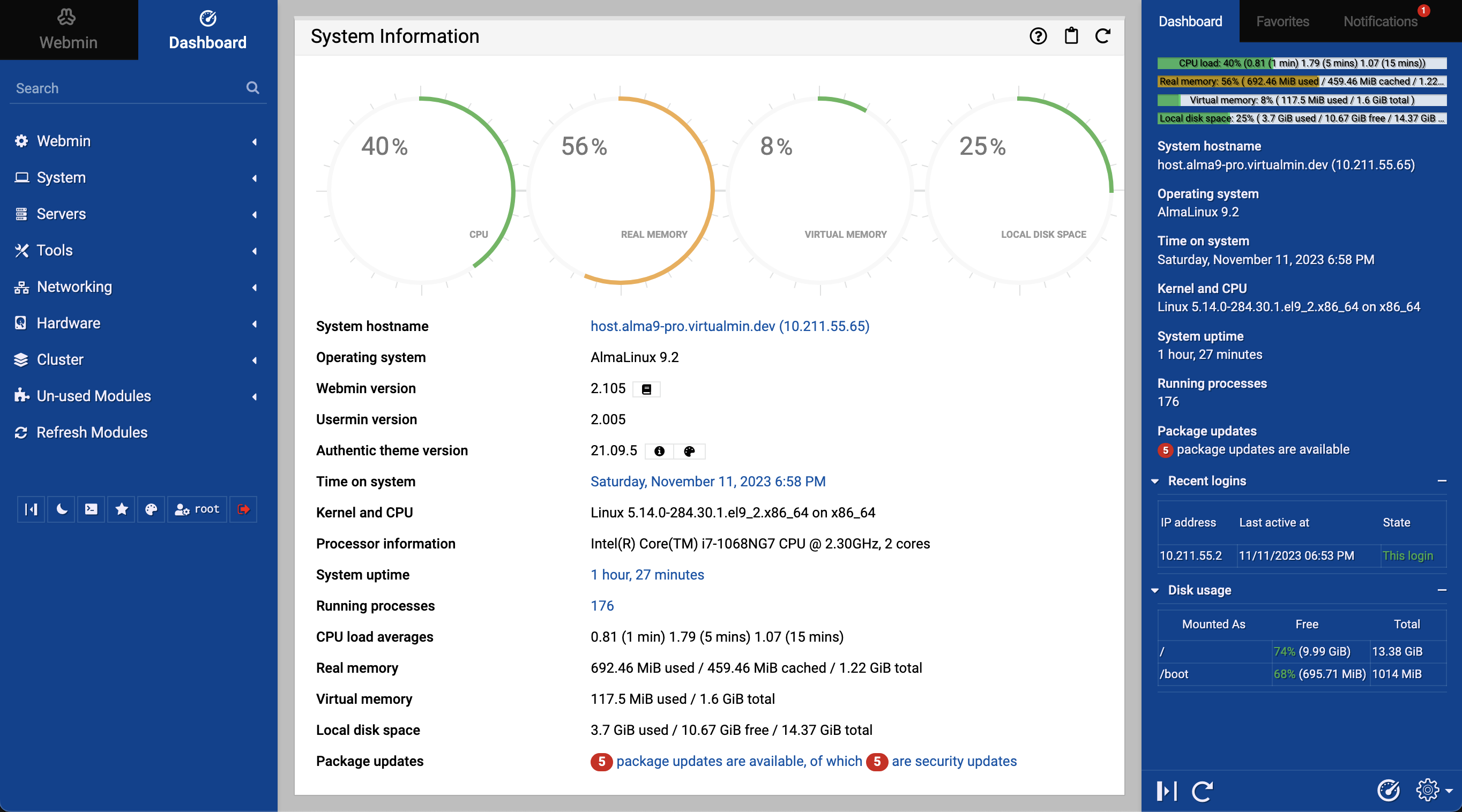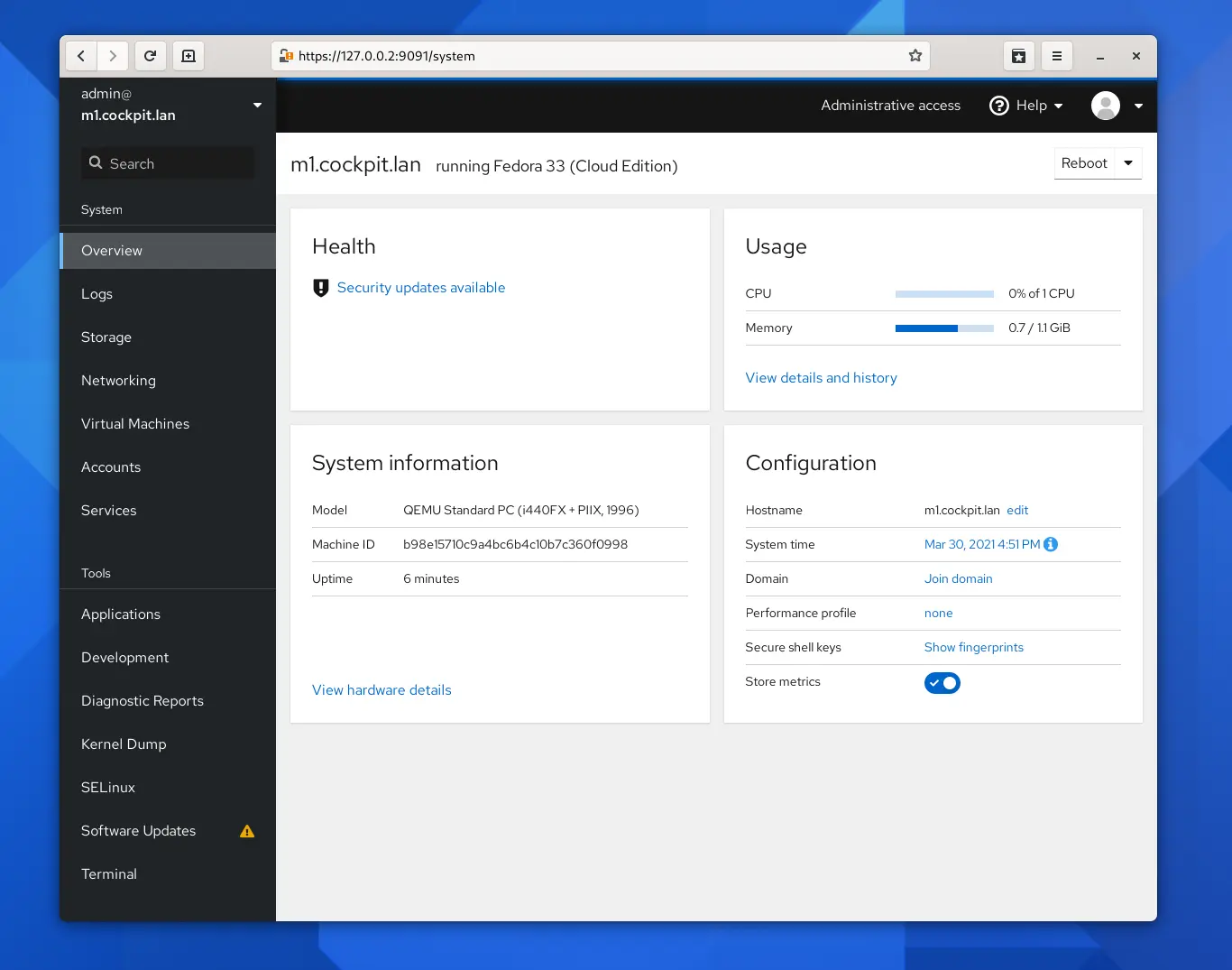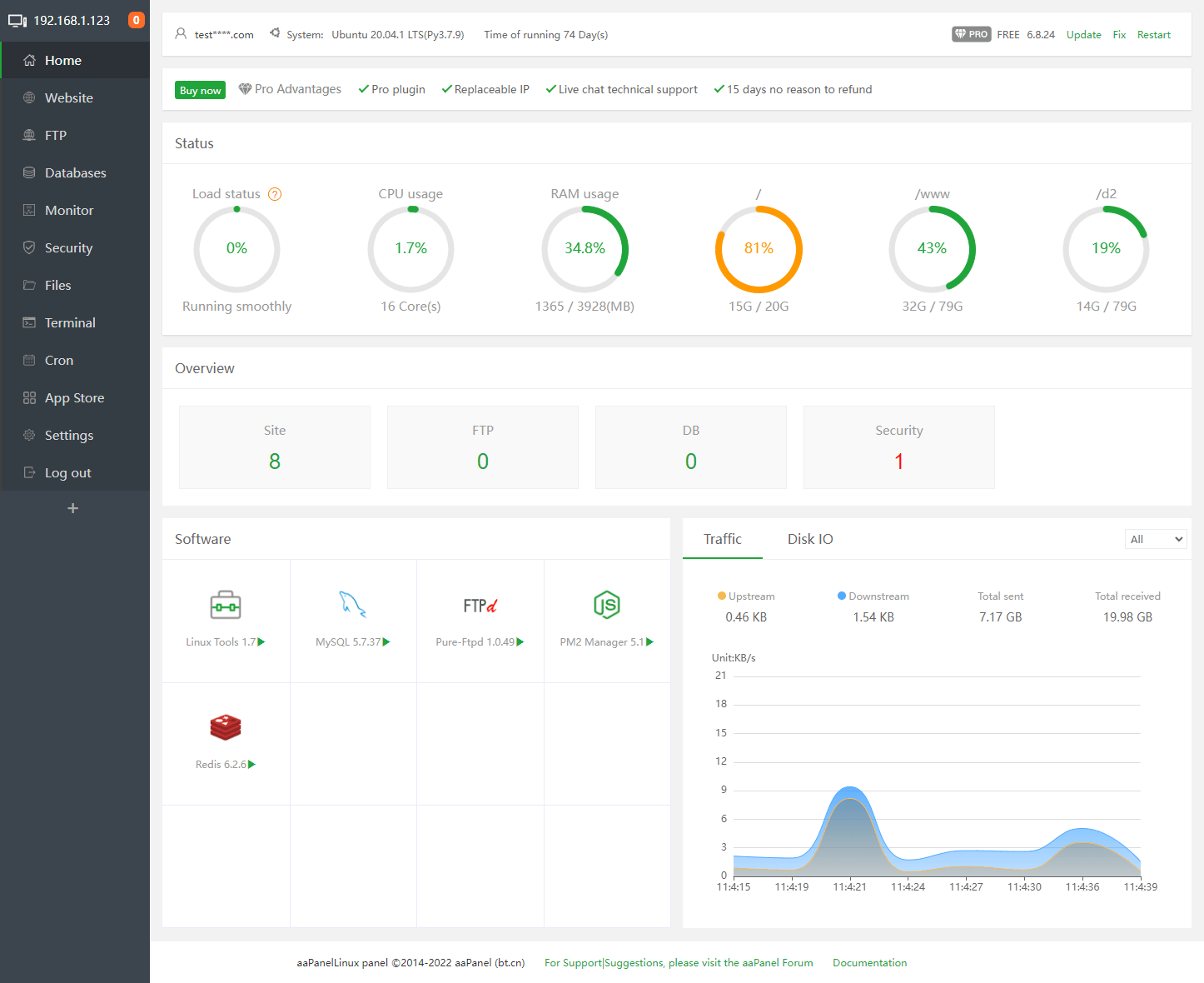7 Tools for Managing Linux Servers Using a GUI
For ease of use, comfort and saving time, you can utilize these tools to manage your fleet of Linux servers through GUI.
— Helder

Although we live in the cloud era, especially with more and more applications running over containerization, there are a certain number of scenarios where having single monoliths that run as servers is an easier or even cheaper option.
When you have one of these monoliths, where you need to host several services such as a web server (Apache and Ngnix), database (MySQL/MariaDB and PostgreSQL), DNS server even Mail Server! You probably would want to have a way to easily manage them.
Everything can be done via the command line, and of course, any respectable Linux Administrator should be able to do so but don't get me wrong, sometimes is not about the knowledge but about working smarter and not harder. Also, automation and notification are a plus to have, and all these tools have them, so why not use them?
Here is a list of some options to manage your Linux servers using a GUI.
1. Webmin

This is probably the most known and common Open Source GUI interface and the oldest one on this list. I have heard of it since my beginnings in Linux (20+ years ago!).
Webmin has it all, manages your web server, database, LDAP, Users and Groups, OS updates, Databases, Networking, everything!
It is very simple in look & feel. You will not be amazed by how it looks, but you will like how it works and how simple it makes things to make it better. It even has an API, so you can create your services or applications to get use of its API and interact directly with it.
2. Vesta Control Panel

Vesta Control Panel is another well known participant from this list. It is newer, but it is also powerful.
Its look & feel is very simplistic and minimalistic. But it comes with a lot of functionalities, such as: web server, database server, FTP server, user and group management, DNS, Firewall, Mail Server and more. It also has an API, so it is pretty flexible and you can even install ClamAV and use it through the GUI.
There have been certain security concerns in the past, but they have addressed it and they offer security features as paid monthly subscription options (although, the main product is free).
They also include Softacolous Auto Installer, to make it easy to install web apps such as WordPress with only a couple of clicks, which makes it very easy to use and helps server admins in their work.
You can find it with a preinstalled option in AWS Marketplace.

Deploy multiple services on a single server in a few clicks
3. Cockpit Project

Cockpit Project is a little different from the others mentioned in this article, as this one is not so dedicated to managing the different services such as web servers, databases, mail servers, etc. This is more a Linux Server manager that allows you to see your server CPU and Memory status, control your server's networking settings, offer you a terminal solution via the web browser to your server, and it will even handle the virtual machines you would want to host in your server.
Think of it more like a “false hypervisor”, as it will not really control your server's resources but only report on them and allow you to graphically run commands.
Also, it helps you to monitor and manage your server's services and daemons and your storage.
It has a very neat and clean interface. It is just a way to easily handle a server via the web rather than the Desktop GUI but can also be a security concern if not properly secured.
This one might be useful for Admins who want to easily control several servers in a single environment, like a small or medium data center.
4. Froxlor

Froxlor is one of my favorites for anyone who just wants to host a simple web and database server service, with advanced features and a nice interface.
It is very neat and easy to set up, it focuses on web hosting with PHP + MySQL and handles Mail Server and FTP accounts, so it is very straightforward in its focus, but does it well. It allows you to handle SSL installations through LetsEncrypt to hosted websites and IP management for these.
It's a full PHP web server GUI and it is intended for you to be a web hosting provider, as you can even activate a reseller panel! So you can use it to easily set up your web hosting monolith business for small websites! Your clients can also set up their reselling accounts below your services.
5. aaPanel

aaPanel is a very interesting one for its security and simplicity. It only handles the web server part with PHP and MySQL database and FTP access. But it has some nice security features like a WAF, which allows the administrator to control and even block certain accesses or hacking attempts, based on IP locations and allows to automatically intercept CC attacks, SQL injection, XSS, one-sentence Trojans, and malicious crawlers.
It also allows you to control basic server things, such as Cron jobs, Terminal through a web browser, and a web file browser to your server.
It is a Freemium application, which means that you can add more features by purchasing them through monthly subscriptions, such as Mobile App, Security Hardening, Website Statistics, and more.

Deploy multiple WordPress on single server
6. HestiaCP

HestiaCP is a fork of the previously mentioned Vesta Control Panel. It has same already mentioned features such as: Server Management, Firewall Management, User Management, SSLs, Web Server management (Apache, Nginx), One-Click Application Install, such as: WordPress, Dokuwiki, Drupal, Grav, Laravel, MediaWiki, NextCloud, OpenCart, Prestashop, Symphony; Mail server and Database Server and has an API and a CLI to interact with it.
It also includes a very nice thing: backups, so it allows you to perform backups and restore from backups to your server. Even though it is not mentioned anywhere as a natural feature and I haven't tested it, it is my guess it somehow can be integrated with the cloud, so you can handle backups outside of your server environment.
Again, its interface is very neat and clean and offers you straightforward tabbed sections for each thing.
7. Zesle CP

ZesleCP is newer, it was created in 2018. It is a very big hosting suite, which is at the same level as any commercial server GUI out there, but in a Freemium license model.
ZesleCP allows you to even resell the hosting through a reseller panel and has a big list of features including Server Configuration, Manage Domains/Users, Manage Subdomains, Click Apps, SSL/TLS, SSH Users, DNS Manager, Email Accounts, FTP Accounts, Cron job management, Web Server, PHP Server including Multi-PHP, MySQL Databases, phpMyAdmin, Cloud Backups & Backup Wizard and more.
Its free version allows you to host up to 2 websites with a single Admin account, but after that, you have different options that allow you different levels of website hosting, and admin accounts including reselling accounts and even white-labeling.
It only works in Ubuntu 20.04, CentOS 7.x, Rocky Linux 8.x, and AlmaLinux 8.x, so it is a bit limited on that matter.
Bonus: Cipi Control Panel
This is probably the smaller and simpler one on this list, but it's very neat and it is intended to be used for cloud hosting, due to its lightweight footprint.
It is very easy to install, as it's just a single script installation through the command line, and it offers a lot of things for simple web hosting such as Server Management, Nginx Server Manager, PHP Server including Multi-PHP, MySql Server, Composer, npm management, Firewall and Security, User management, LetsEncrypt Certificate Management, Real-Time Stats and more.
It runs on the latest versions of LTS distributions and even supports Ubuntu 20.04 LTS! It's a very nice option for keeping your web hosting monolith simple and lighter.
Conclusion
As I mentioned earlier, you can manage your Linux server and the services running it in via the command line. However, these tools make the mundane server management tasks easier. It's all about ease of comfort and using these tools won't make you a lesser sysadmin but a smart one.


